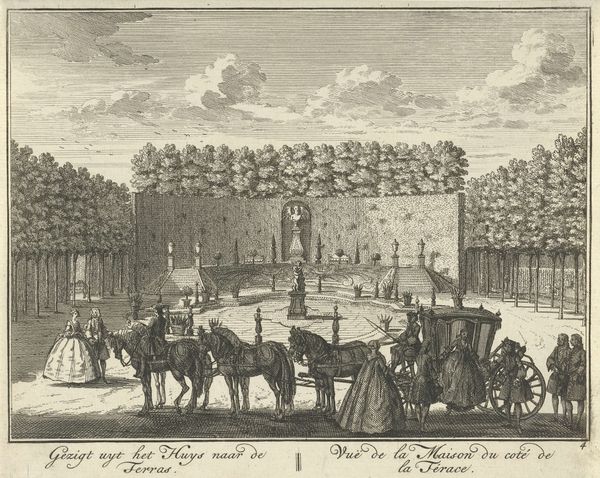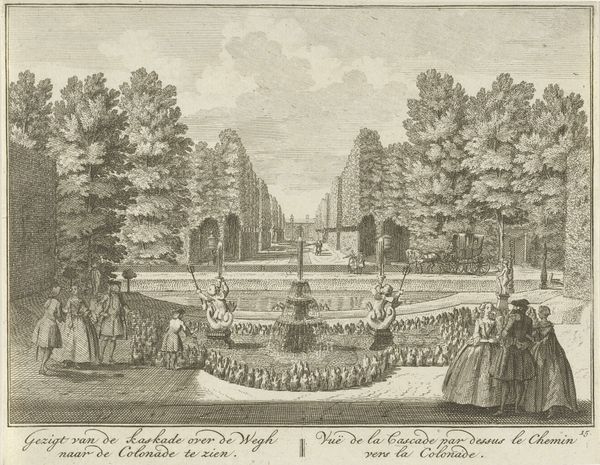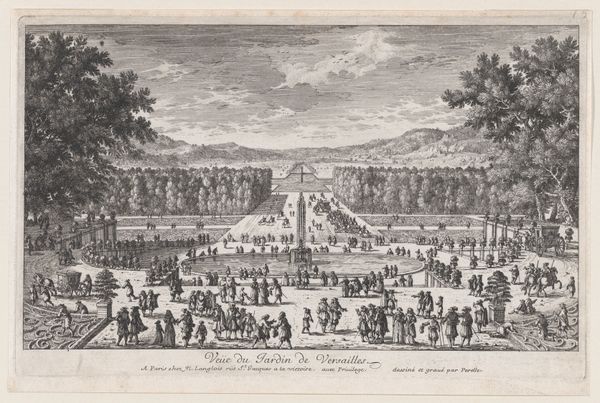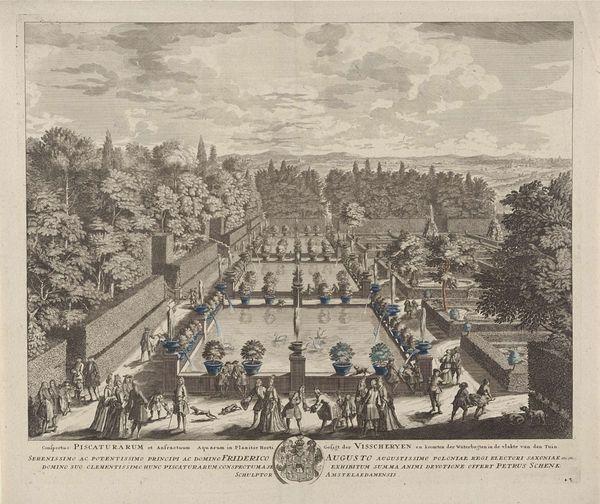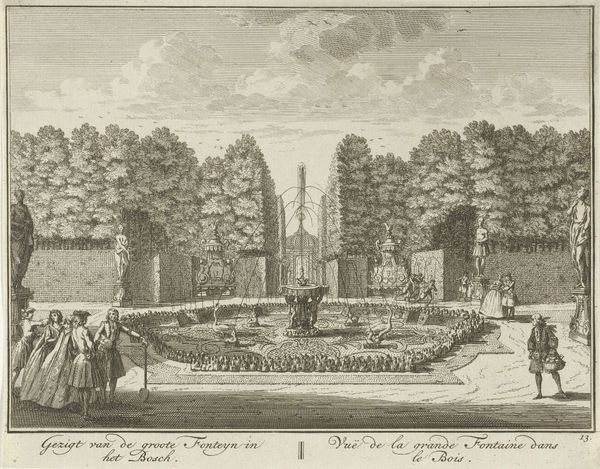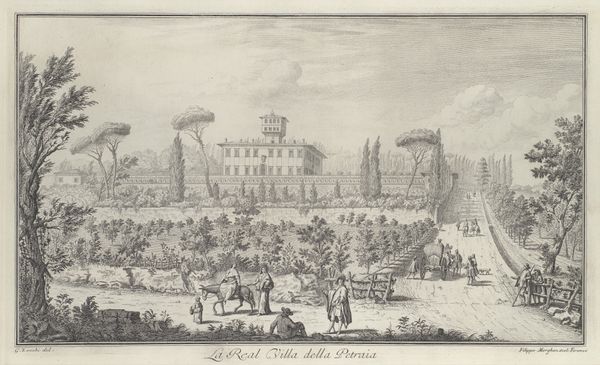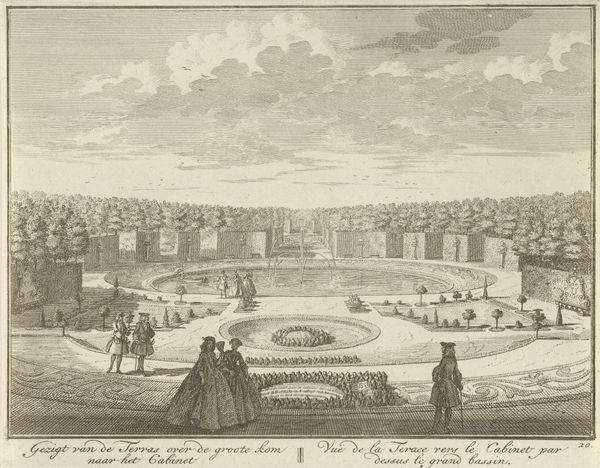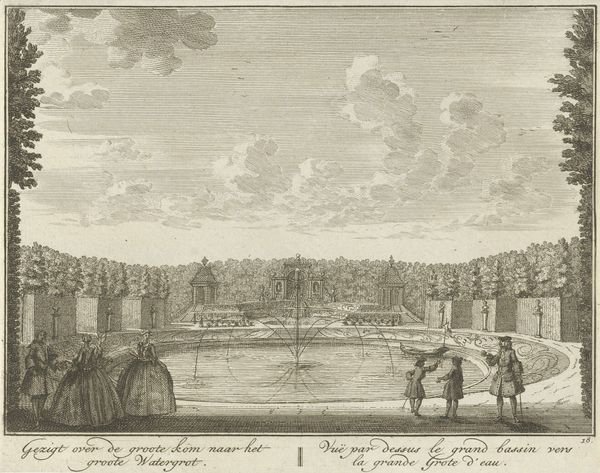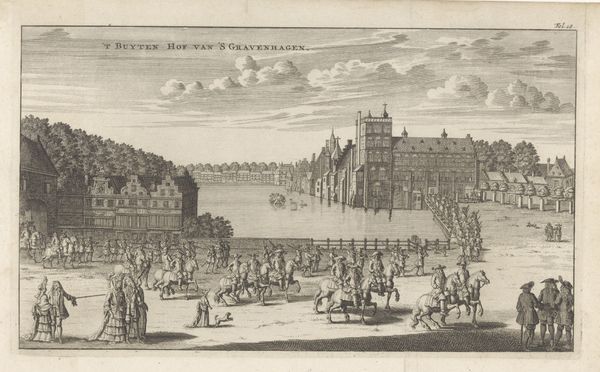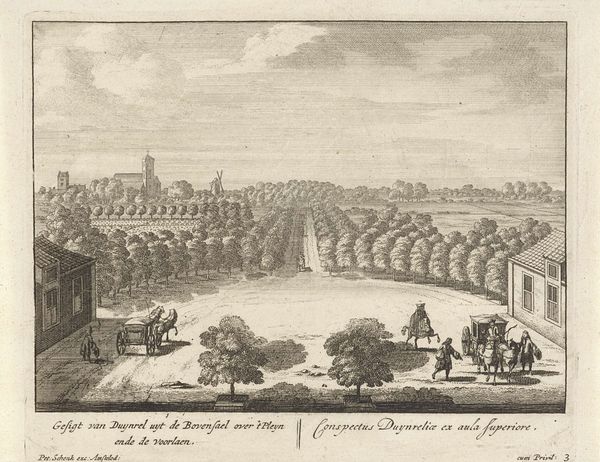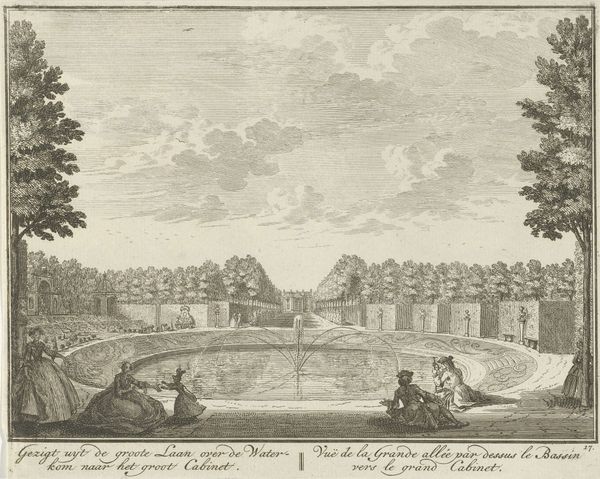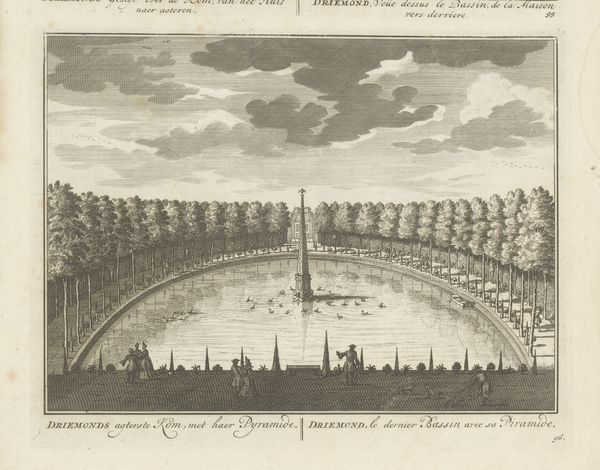
Gezicht vanuit de Turkse Tent op de oranjerie en de volière in de tuin van Huis ter Meer te Maarssen c. 1740
0:00
0:00
hendrikdeleth
Rijksmuseum
drawing, print, engraving
#
drawing
#
aged paper
#
quirky sketch
#
baroque
# print
#
old engraving style
#
sketch book
#
landscape
#
personal sketchbook
#
sketchwork
#
pen-ink sketch
#
line
#
pen work
#
sketchbook drawing
#
cityscape
#
sketchbook art
#
engraving
Dimensions: height 160 mm, width 203 mm
Copyright: Rijks Museum: Open Domain
Curator: Welcome. We’re looking at Hendrik de Leth’s engraving, "Gezicht vanuit de Turkse Tent op de oranjerie en de volière in de tuin van Huis ter Meer te Maarssen," dating from around 1740, currently held in the Rijksmuseum collection. Editor: The detail is extraordinary, though I find it quite austere. The strict geometry of the garden seems to impose a heavy hand on nature itself, doesn’t it? Curator: Indeed. The emphasis on linear perspective is crucial. Note how de Leth uses orthogonals to draw our eye deep into the pictorial space, toward that distant gate. The composition meticulously organizes every element around the central axis. Editor: And what does it mean to gaze upon this scene, so meticulously ordered, "from the Turkish tent," as the title indicates? What narratives of power and exoticism are subtly at play here, given the rise of colonialism? Curator: A valid question. Viewing it solely as a formal exercise, observe how the stark lines of the hedges and architecture contrast with the softer shapes of the trees and figures, generating a compelling visual rhythm. The engraver's skill in suggesting depth and texture using only line is remarkable. Editor: The very act of rendering such a space, presumably for a specific, privileged viewership, becomes a political act, normalizing a certain relationship to land and leisure. Who inhabited the space and under what conditions? Curator: While your focus broadens, one can’t ignore the delicate linework and the subtle tonal variations achieved through hatching and cross-hatching. Look, for instance, at the cloud formations and how they subtly mirror the garden's layout. Editor: Agreed. Yet I wonder how the garden served as a stage for enacting social roles. Consider how figures in the foreground are arranged. They perform social functions for the primary, almost exclusively affluent audience. Curator: True. A fascinating work. Editor: Absolutely, offering a lens to view the intertwined issues of that period.
Comments
No comments
Be the first to comment and join the conversation on the ultimate creative platform.
